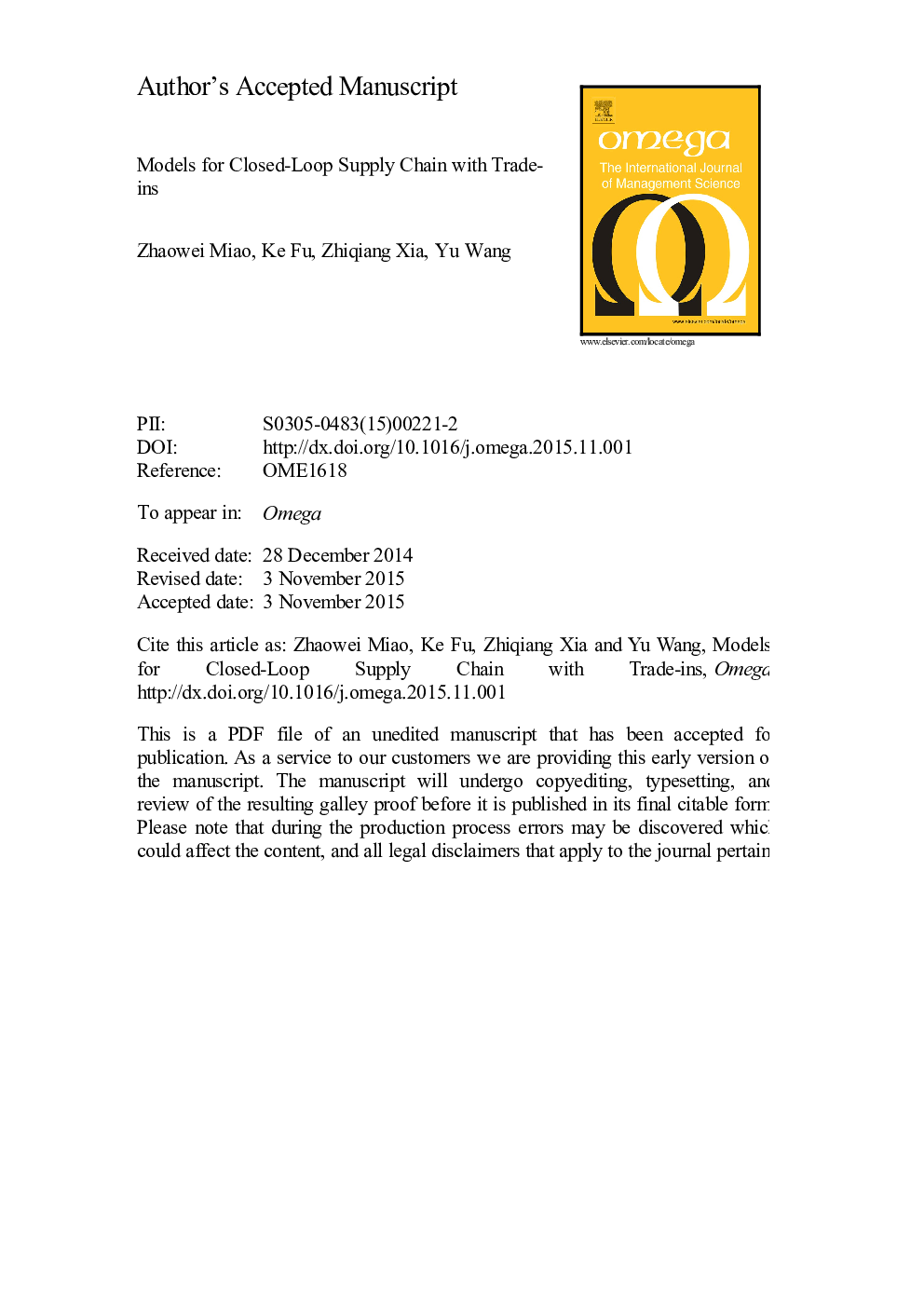| Article ID | Journal | Published Year | Pages | File Type |
|---|---|---|---|---|
| 5111756 | Omega | 2017 | 36 Pages |
Abstract
Three kinds of decision models for closed-loop supply chain (CLSC) with trade-ins are developed in this paper, including the centralized collection (Model C), the retailer collection (Model R), and the manufacturer collection (Model M). By analyzing these models, we argue that there are three types of optimal collection strategies, namely, no collection, partial collection, and full collection. We provide conditions under which one of these three collection strategies is optimal for different supply chain models. By comparing the impact of trade-ins on these different supply chain models, we find that only when the direct net value of a used product derived from the trade-ins for the whole CLSC system including the consumers is high enough can trade-in strategy be adopted to stimulate consumer demand and improve the manufacturer׳s and retailer׳s profit. Based on the life-cycle assessment method, we find that when the marginal effect of the product on environment in the continue-to-use phase is more significant than in other phases, trade-ins can promote the environmental performance of the CLSC system. Further, by comparing the optimal solutions for the different models, we find that one collection model may dominate the others in terms of the economic performance of the involved parties. Specifically, Model M dominates Model R in terms of the profits of the manufacturer and the profits of the whole supply chain; Model R dominates Model M in terms of retailer׳s profit; and Model R dominates all other models in terms of environmental performance.
Related Topics
Social Sciences and Humanities
Business, Management and Accounting
Strategy and Management
Authors
Zhaowei Miao, Ke Fu, Zhiqiang Xia, Yu Wang,
